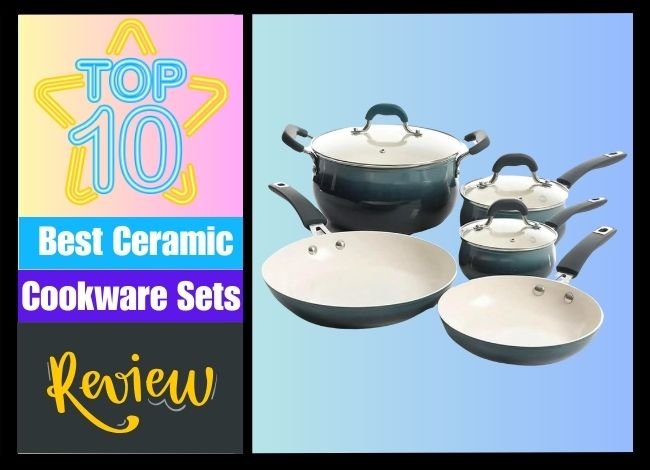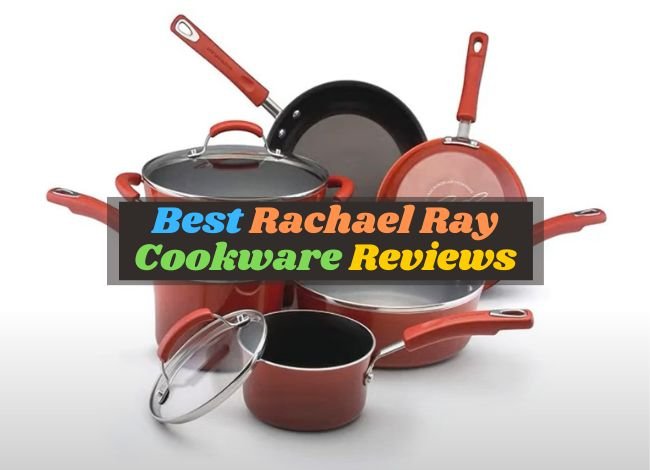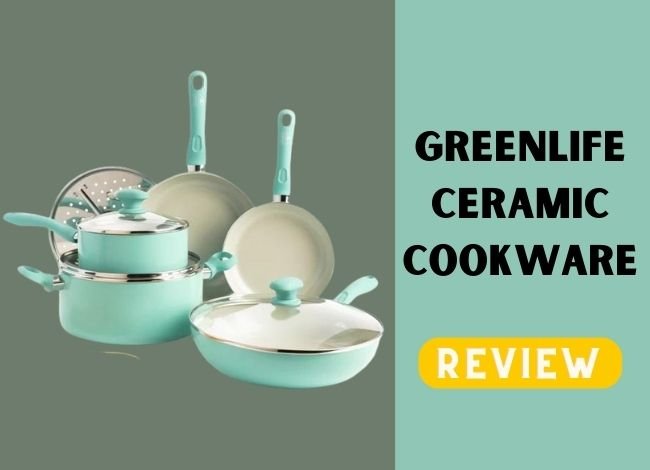Last Updated on February 13, 2024
When it comes to elevating your kitchen with high-end appliances, the Wolf Gourmet Oven and the Breville Toaster Oven are two names that consistently emerge at the top of the list. Both renowned for their superior design, versatility, and performance, these kitchen gadgets promise to transform your cooking experiences. But how do they stack up against each other? This comprehensive guide will delve deep into the world of gourmet and toaster ovens, comparing the Wolf Gourmet Oven with the Breville Toaster Oven to help you decide which suits your culinary needs best.
Overview of the Wolf Gourmet Oven
The Wolf Gourmet Oven is a testament to the brand’s commitment to precision, durability, and professional-grade cooking performance. Designed for the home chef who demands the best, this oven typically features convection capabilities, a range of cooking modes, and a robust build. It’s engineered to provide uniform heat distribution, ensuring your dishes are always cooked perfectly. The Wolf Gourmet Oven also boasts a sleek design that can complement any kitchen aesthetics, making it not just a cooking appliance, but a statement piece.
Overview of the Breville Toaster Oven
On the other side, the Breville Toaster Oven stands as a pinnacle of innovation and convenience in the kitchen. Known for its smart features, including Element IQ technology, it adjusts the power of the heating elements to cook food more efficiently and evenly. Compact yet versatile, the Breville Toaster Oven can bake, roast, toast, and more, making it an ideal choice for kitchens with limited space. Its user-friendly interface and easy-to-clean components ensure a seamless cooking experience for users of all skill levels.
Features Comparison Table: Clay Pot vs. Dutch Oven
| Feature | Clay Pot | Dutch Oven |
|---|---|---|
| Material | Natural clay, often unglazed | Cast iron, typically coated with enamel |
| Heat Distribution | Slow and even, retains moisture | Excellent, promotes even cooking |
| Temperature Tolerance | Low to medium heat, sensitive to thermal shock | High heat, oven-safe |
| Versatility | Best for slow cooking and baking | Suitable for frying, searing, baking, and stewing |
| Maintenance | Requires seasoning if unglazed, hand wash recommended | Easier, dishwasher safe if enamel-coated |
| Durability | Fragile, prone to cracking if mishandled | Extremely durable, can last generations |
| Health Benefits | Natural material, no chemicals | Enamel coating prevents iron from leaching |
| Price | Generally more affordable | More expensive, depending on brand and size |
Differences Between Wolf Gourmet Oven and Breville Toaster Oven
When comparing the Wolf Gourmet Oven to the Breville Toaster Oven, several key differences emerge:
- Performance and Versatility: The Wolf Gourmet Oven typically offers more cooking modes and features tailored to the serious home chef, such as precise temperature control and convection settings. Meanwhile, the Breville focuses on intelligent, efficient cooking for everyday use with features like the Element IQ.
- Size and Capacity: The Wolf Oven is generally larger, making it better suited for preparing meals for families or entertaining guests. The Breville, with its compact design, is ideal for smaller kitchens or for individuals and couples.
- Price Point: There is a noticeable price difference, with the Wolf Gourmet Oven being the more premium option. Its superior build quality and advanced cooking features justify its higher price tag. In contrast, the Breville offers excellent value with its innovative features at a more accessible price point.
- Aesthetic and Design: While both models boast a modern design, the Wolf Gourmet Oven leans more towards a professional kitchen aesthetic, whereas the Breville offers a sleek, contemporary look that fits well in any modern kitchen.
Choosing between the Wolf Gourmet Oven and the Breville Toaster Oven ultimately depends on your cooking needs, budget, and kitchen space. Whether you prefer the Wolf’s professional-grade performance or the Breville’s intelligent, efficient cooking, both are stellar additions to any kitchen.
Benefits of the Clay Pot
Enhanced Flavor and Nutrition
Clay pots, known for their porous nature, allow heat and moisture to circulate evenly throughout the cooking process. This method not only enhances the flavor of the food but also preserves nutrients that might otherwise be lost through other cooking methods. The gentle cooking process in a clay pot ensures that meals are delicious and healthier.
Energy Efficiency
Due to their ability to retain heat well, clay pots can cook food effectively at lower temperatures and keep food warm for extended periods. This characteristic makes clay pots an energy-efficient choice for the environmentally conscious cook.
Natural and Safe Cooking
Clay pots are made from natural materials and do not contain harmful chemicals or coatings that might leach into food. This feature ensures that your meals are as safe as they are savory, free from metal or chemical contamination concerns.
Disadvantages of the Clay Pot
Fragility
One of the main drawbacks of clay pots is their fragility. They can easily crack if dropped or exposed to sudden temperature changes, making them less durable than metal or ceramic cookware.
Maintenance
Clay pots require specific care to maintain their integrity and functionality. They should be seasoned before their first use and cleaned carefully to avoid damaging their porous surface. Additionally, they cannot be used on high heat settings or in the dishwasher, which might be inconvenient for some users.
Cooking Time
Given their cooking mechanism, clay pots typically take longer to heat up and cook food than metal pots. This longer cooking time might not suit everyone’s lifestyle, especially for those who prefer quick and convenient meal preparation.
Benefits of the Dutch Oven
Versatility
Dutch ovens are incredibly versatile, suitable for a wide range of cooking methods, including baking, boiling, frying, and stewing. This versatility makes them an essential tool in any kitchen, capable of handling almost any recipe you wish to create.
Durability
Made from cast iron or heavy-duty materials, Dutch ovens are known for their durability and can last for decades with proper care. Their robust construction also allows them to withstand high temperatures, making them ideal for both stovetop and oven use.
Heat Retention and Distribution
Dutch ovens retain and distribute heat evenly, ensuring that food is cooked perfectly throughout. This even heat distribution is key to achieving consistent cooking results, particularly for complex dishes that require precise temperature control.
Disadvantages of the Dutch Oven
Weight
The durable construction of Dutch ovens comes at the cost of weight. These pots are significantly heavier than their counterparts, making handling and storage challenging, especially for those with limited strength or kitchen space.
Maintenance
While not as high-maintenance as clay pots, Dutch ovens, particularly cast iron ones, require seasoning to maintain their non-stick surface and prevent rust. This maintenance can be cumbersome for some users, adding an extra step to the cooking and cleaning process.
Cost
High-quality Dutch ovens can be pretty expensive, making them a significant investment. While their durability and versatility justify the cost for many, the initial price point may be prohibitive for those on a tight budget.
In conclusion, the Wolf Gourmet Oven, Breville Toaster Oven, clay pots, and Dutch ovens offer unique benefits to the modern cook. Choosing the right appliance or cookware depends on your cooking style, preferences, and needs. Whether you value the convenience and precision of a high-end toaster oven, the traditional and natural cooking method of a clay pot, or the versatility and durability of a Dutch oven, a solution is suitable for every kitchen.
Which is Better for Grilling – Clay Pot or Dutch Oven?
Grilling with a clay pot offers a unique cooking method, providing a slow, even heat perfect for tender, flavorful dishes. However, it’s less conventional for grilling compared to using a Dutch oven. Dutch ovens, made from cast iron or enameled cast iron, are excellent for grilling and searing meat due to their ability to withstand high temperatures and retain heat. They can be used on the stovetop or in the oven, making them more versatile for different grilling techniques.
A Dutch oven is generally the better choice for grilling purposes because of its durability, heat distribution, and versatility. It allows for searing, braising, and even baking, offering a wide range of culinary possibilities.
Which is Better for Baking- A Clay Pot or a Dutch Oven?
Both clay pots and Dutch ovens have merits when it comes to baking. Clay pots are known for their ability to enhance moisture retention, making them ideal for baking bread, roasting vegetables, and slow-cooking meats. The porous nature of clay allows for a unique flavor infusion and a crusty exterior on bread.
Meanwhile, Dutch ovens are incredibly versatile in baking, producing beautifully risen loaves of bread, casseroles, and even desserts. The tight-fitting lids on Dutch ovens trap steam, which is crucial for getting a good rise in bread. Given its versatility and ability to produce a wide range of baked goods, a Dutch oven might be the better choice for those looking for an all-around baking solution.
Best Clay Pot for Cooking
Selecting the best clay pot for cooking involves considering factors such as material quality, size, and versatility. High-quality clay pots are made from natural, unglazed clay and offer a non-toxic, nutrient-rich cooking method. The ideal clay pot should be large enough to accommodate your typical recipes but versatile enough for various cooking methods, including baking, roasting, and slow cooking.
Best Dutch Ovens
The best Dutch ovens are characterized by their material, construction, and brand reputation. Cast iron Dutch ovens, especially enameled ones, are highly prized for their durability and versatility. Brands like Le Creuset and Staub are renowned for their quality, offering Dutch ovens that evenly distribute heat and can be used on any cooking surface, including induction. When choosing a Dutch oven, consider the size you need based on your cooking habits and the types of dishes you frequently prepare.
Popular Clay Pot Recipes
Clay pot cooking is a traditional method cherished for enhancing flavor and retaining nutrients. Here are some popular recipes that showcase the unique qualities of clay pot cooking:
- Clay Pot Chicken Rice: A one-pot wonder where rice and chicken cook together with aromatics, infusing the dish with incredible depth of flavor.
- Moroccan Tagine: This North African stew, slow-cooked in a clay pot, combines sweet and savory elements for a rich, complex taste.
- Baked Fish in Clay Pot: Cooking fish in a clay pot ensures moist, flaky results, with herbs and spices melding perfectly in the gentle heat.
Each recipe benefits from the clay pot’s steady, even heat distribution, making these dishes delicious and a joy to prepare.
Popular Dutch Oven Recipes
The Dutch oven is a versatile kitchen staple, perfect for both stovetop and oven cooking. Here are some must-try recipes:
- Dutch Oven Bread: This simple no-knead bread recipe achieves bakery-quality crust and soft interior.
- Beef Bourguignon: This classic French stew becomes even more flavorful when slow-cooked in a Dutch oven.
- Vegetarian Chili: A hearty, comforting dish that’s perfect for feeding a crowd, showcasing the Dutch oven’s capability for even cooking and flavor enhancement.
These recipes highlight the Dutch oven’s adaptability, proving it to be an indispensable tool for a wide range of dishes.
Frequently Asked Questions
Q: Can the Wolf Gourmet Oven accommodate a full-sized turkey?
A: The Wolf Gourmet Oven is designed to fit a full-sized turkey, making it ideal for holiday cooking.
Q: Is the Breville Toaster Oven energy efficient?
A: Absolutely, the Breville Toaster Oven is known for its energy efficiency, making it a great choice for everyday meals.
Q: Can I use metal utensils in a clay pot?
A: Metal utensils should be avoided in clay pots to prevent scratching the surface. Wooden or silicone utensils are recommended.
Q: How do I clean my Dutch oven?
A: While many Dutch ovens are dishwasher safe, hand washing with warm, soapy water is recommended to maintain the coating and appearance.
Final Words
Choosing between the Wolf Gourmet Oven and the Breville Toaster Oven depends on your cooking style, space, and budget. Both offer unique benefits, whether it’s the Wolf’s versatility and capacity or the Breville’s efficiency and compact design. Incorporating clay pot and Dutch oven recipes into your repertoire can also elevate your culinary skills, offering dishes rich in flavor and tradition. Remember, the best appliance is the one that meets your specific needs, enabling you to explore and enjoy the art of cooking to its fullest.




